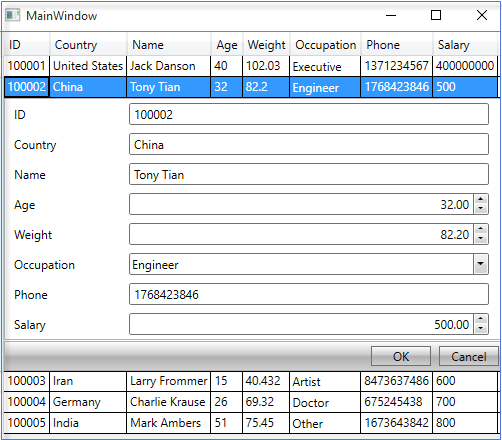Integrating InputPanel with ComponentOne's DataGrid or MS DataGrid is easy as both these controls come with a baked-in template, RowDetailsTemplate. Using this template, you can easily show the row details in a compact layout. You can interact with the template in the design view, and set binding in XAML view to implement integration.
The following image shows an InputPanel integrated with a data grid (C1DataGrid).

Perform the following steps to integrate InputPanel with ComponentOne DataGrid:
| XAML |
Copy Code
|
|---|---|
<DataGrid Name="dataGrid"> <DataGrid.RowDetailsTemplate> <DataTemplate> <c1:C1InputPanel CurrentItem="{Binding .}" /> </DataTemplate> </DataGrid.RowDetailsTemplate> </DataGrid> |
|